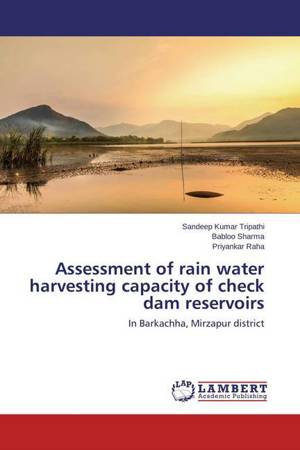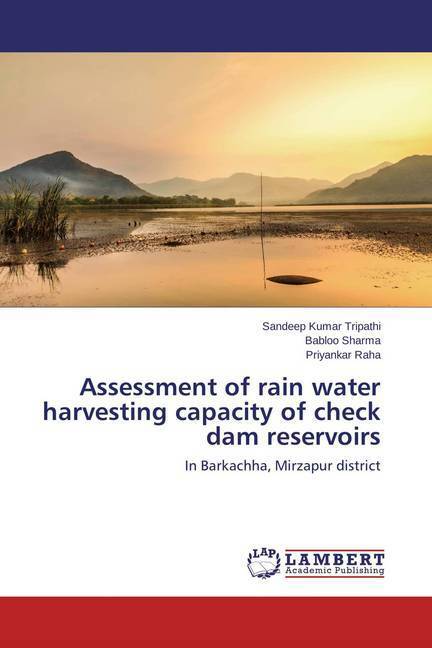
- Afhalen na 1 uur in een winkel met voorraad
- Gratis thuislevering in België vanaf € 30
- Ruim aanbod met 7 miljoen producten
- Afhalen na 1 uur in een winkel met voorraad
- Gratis thuislevering in België vanaf € 30
- Ruim aanbod met 7 miljoen producten
Zoeken
Assessment of rain water harvesting capacity of check dam reservoirs
In Barkachha, Mirzapur district
Sandeep Kumar Tripathi, Babloo Sharma, Priyankar Raha
Paperback | Engels
€ 39,95
+ 79 punten
Omschrijving
Abstract The present study was carried out Barkachha, Mirzapur district and lies between 25000' to 25015' North latitude and 820 45' East longitude. The farm is situated at an altitude of 180.59m above mean sea level. Barkachha, a part of central Vindhyan plateau is rocky and undulating land having many small rivulets and channels which quickly drain away the bounties of rainwater along with the fine crust of the top fertile soil. To overcome this situation, two check dam were constructed by the Uttar Pradesh Irrigation Department, during 2001. The present study was under taken to evaluate the rainwater harvesting capacity of these reservoirs for supplementary irrigation of the cultivated crops, viz cereal, pulses and oil seeds. The runoff water accumulated from July and remains up to February/March. Maximum volume of the harvested rainwater in both the reservoirs was during September with a capacity 22550 m3 and 121170 m3 in reservoir No. 1 and reservoir No. 2, respectively. There was no water during the month of April to June in both the reservoirs. The crop producing area under these reservoirs through supplementary irrigation for the last one decade varied from 17.5 to 26.1 ha
Specificaties
Betrokkenen
- Auteur(s):
- Uitgeverij:
Inhoud
- Aantal bladzijden:
- 72
- Taal:
- Engels
Eigenschappen
- Productcode (EAN):
- 9783659707766
- Verschijningsdatum:
- 15/05/2015
- Uitvoering:
- Paperback
- Afmetingen:
- 150 mm x 220 mm
- Gewicht:
- 118 g

Alleen bij Standaard Boekhandel
+ 79 punten op je klantenkaart van Standaard Boekhandel
Beoordelingen
We publiceren alleen reviews die voldoen aan de voorwaarden voor reviews. Bekijk onze voorwaarden voor reviews.








